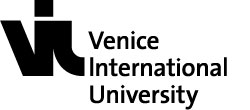S2229 Eco Media
Professors
Schedule
Course description
According to the United Nation’s Global E-Waste Monitor 2020, “a record 53.6 million metric tonnes of electronic waste was generated worldwide in 2019, up 21% in just five years.” E-waste is the fastest growing consumer-based waste stream, driven by exponential growth in the consumption of electronics that are “designed to fail” with few options for repair, reuse, nor recycling. Coupled with the carbon footprint of “just-in-time” global supply and distribution chains, and the water and energy demands of the server farms that enable our digital lives, the environmental toll of ubiquitous media technology is staggering.
At the same time, digital and computational media are at the center of efforts to understand and combat climate change and imagine a more sustainable future. The networked sensing capacities of the Internet of Things promise to transform the information ecologies that drive environmental decision-making, promising “smart” cities and environments optimized for energy and resource efficiency, enabling more sustainable lifestyles, and greater social well-being. Machine learning is transforming everything from climate modeling to architectural design. And new media technologies enable novel strategies for environmental activists to reach the hearts and minds of the public through augmented and virtual reality experiences, gamification, and social media.
This course, part of the emerging field of environmental humanities, leverages the critical and interpretive methods of the arts and humanities to explore whether and how the conceptual, material, and historical insights of media studies contribute to the discourses and debates surrounding environmental management and sustainable development. Not only will we interrogate the environmental impacts of contemporary media technologies and infrastructures, but we will also assess the tropes that frame emerging media, which often obscure and deflect our reckoning with their detrimental ecological consequences (e.g. the inaccessibility of “black boxes,” the ethereality of “cloud computing,” the immateriality of light). In what ways might we conceptualize media otherwise, in ways that scaffold and nurture more ethical and transformative relationships between humans, technologies, and the “naturecultures” that constitute our ecological milieu? To that end, we will consider recent work that theorizes the environment itself as media — ecomedia, geologic media, elemental media, wild blue media — to frame and formulate contemporary environmental justice and sustainability concerns, particularly as they pertain to Venice.
Learning Outcomes
At the end of the course, students will be able:
• To identify different approaches to “media literacy” in the context of ecological thinking.
• To explain how the concepts of “media” and “mediation” intersect with and illuminate issues of environmental concern.
• To understand and apply a materialist analytical lens to contemporary media technologies and infrastructures.
• To compare and evaluate the affordances of eco-media theoretical paradigms for framing and formulating issues related to environmental justice and sustainability.
Teaching and Evaluation Methods
Class sessions will consist of a mix of faculty-led lectures, interactive student presentations, and guided discussions and debates. Student evaluations will be based on two short “ecomedia inventories” (20%), in-class presentation / discussion leadership (25%), participation (25%), and a group semester project (30%).
Bibliography
All course readings are in English and will consist of journal articles as well as book chapters selected from the following texts:
CUBITT, SEAN.,(2017), Finite Media: Environmental Implications of Digital Technologies. Durham: Duke University Press.
EDWARDS, PAUL N., (2013), A Vast Machine: Computer Models, Climate Data, and the Politics of Global Warming. Cambridge, Mass.: MIT Press.
FURUHATA, YURIKO, (November 2019), “Of Dragons and Geoengineering: Rethinking Elemental Media.” Media+Environment 1, no. 1.
GABRYS, JENNIFER, (2013), Digital Rubbish: A Natural History of Electronics. Ann Arbor: Univ. of Michigan Press, 2013.
HORN, EVA, (December 2018), “Air as Medium.” Grey Room 73, 6–25.
IHEKA, CAJETAN NWABUEZE, (2021), African Ecomedia: Network Forms, Planetary Politics. Durham: Duke University Press.
JUE, MELODY, (2020), Wild Blue Media: Thinking through Seawater. Durham: Duke University Press.
JUE, MELODY, and Rafico Ruiz, (eds) (2021), Saturation: An Elemental Politics. Durham: Duke University Press.
LÓPEZ, ANTONIO, (2020), Ecomedia Literacy: Integrating Ecology into Media Education. London: Routledge.
MATTERN, SHANNON CHRISTINE, (2017), Code + Clay, Data + Dirt: Five Thousand Years of Urban Media. Minneapolis: University of Minnesota Press.
MATTERN, SHANNON CHRISTINE, (2017), “The Big Data of Ice, Rocks, Soils, and Sediments.” Places Journal, no. 2017.
MAXWELL, RICHARD, AND TOBY MILLER, (2012) Greening the Media. Oxford; New York: Oxford University Press, 2012.
MIRZOEFF, NICHOLAS, (2014), “Visualizing the Anthropocene.” Public Culture 26, no. 2, 213–32.
Mitchell, Robert, (2010), Bioart and the Vitality of Media. In Vivo: The Cultural Mediations of Biomedical Science. Seattle: University of Washington Press.
PARIKKA, JUSSI, (2015), A Geology of Media. Electronic Mediations, volume 46. Minneapolis: University of Minnesota Press.
PETERS, JOHN DURHAM, (2016), The Marvelous Clouds: Toward a Philosophy of Elemental Media. Chicago: The University of Chicago Press.
RUST, STEPHEN, SALMA MONANI, AND SEAN CUBITT, (eds.) (2015), Ecomedia: Key Issues. London: Routledge.
STAROSIELSKI, NICOLE, (November 2019), “The Elements of Media Studies.” Media+Environment 1, no. 1.
STAROSIELSKI, NICOLE, (2021), Media Hot and Cold. Durham: Duke University Press. https://doi.org/10.1215/9781478021841.
TAYLOR, J. O., (January 1, 2014) “Auras and Ice Cores: Atmospheric Archives and the Anthropocene.” The Minnesota Review 2014, no. 83, 73–82.
VARGAS, ELIA.,( March 2021), “Field Notes for Future Petropractices: Refiguring Oil and/as Media.” Media+Environment 3, no. 1.
YOUNG, LIAM COLE., (November 2020), “Salt: Fragments from the History of a Medium.” Theory, Culture & Society 37, no. 6, 135




















